The Hunga Tonga-Hunga Ha’apai volcanic eruption on Saturday morning was the shockwave heard around the globe, including here in Alaska, starting at around 3:30 a.m., according to the National Weather Service.
That’s 5,800 miles from the volcano itself deep in the South Pacific. The infrasound measurements from the @alaska_avo confirm that the sound some people heard was coincident with the volcanic pressure wave.
One person in Homer said he distinctly heard the pressure wave at about 4 am.
The eruption of the Hunga Tonga-Hunga Haʻapai volcano was heard across the South Pacific, and eventually as far away as the US.
Much of Tonga, whose capital is 40 miles south of the eruption, is covered in ash and the power is out, with no phone or internet service.
According to the National Weather Service, the pressure wave was not heard in Hawaii, much closer to the eruption.
“The fact that it wasn’t heard closer to the event (e.g., Hawaii) suggests there was an atmospheric component that caused a local/regional bouncing of the sound waves off some portion of the atmosphere. Just speculation. People will be researching this event for many years,” the NWS Alaska reported on social media.
Meteorologists and amateur weather station owners later picked up the pressure wave in places like New Jersey.
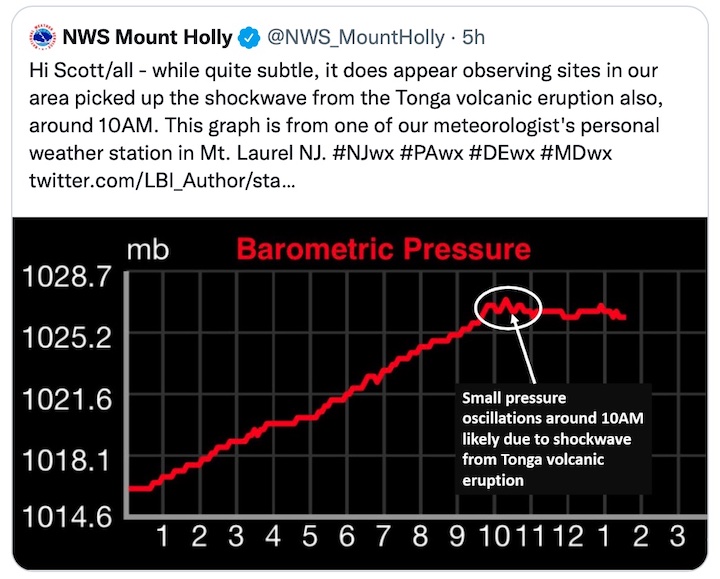
People on Twitter said their barometers picked up some unusual atmospheric pressures. These two posted on social media are from Alaska:
Meanwhile, social media users with their iPhones and barometers were crowd-sourcing the reporting on the tsunami that was documented across the West Coast, from piers in Oceanside to Crescent City, California.
The National Weather Service and National Oceanic and Atmospheric Administration were providing real time information on Twitter throughout the day. The tsunami advisory was called off at about 3:30 pm on Saturday, Jan. 15.
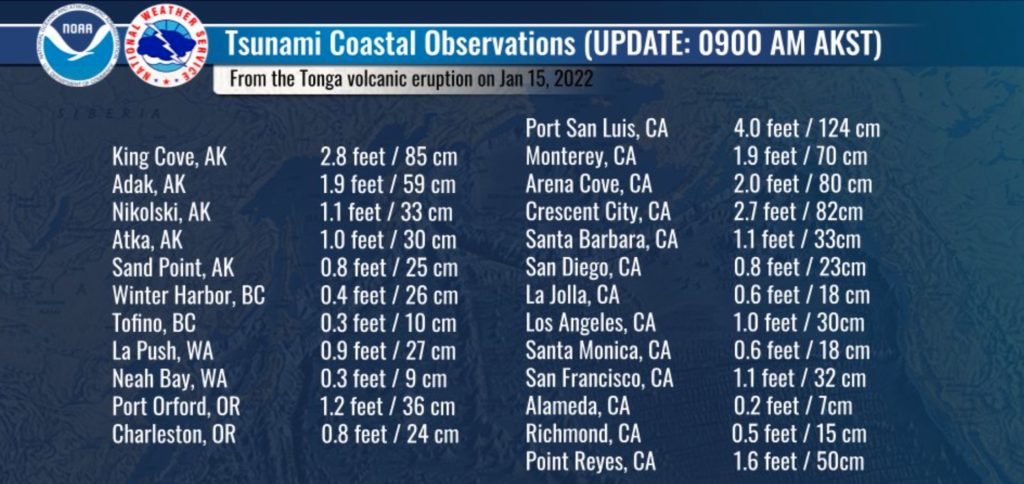
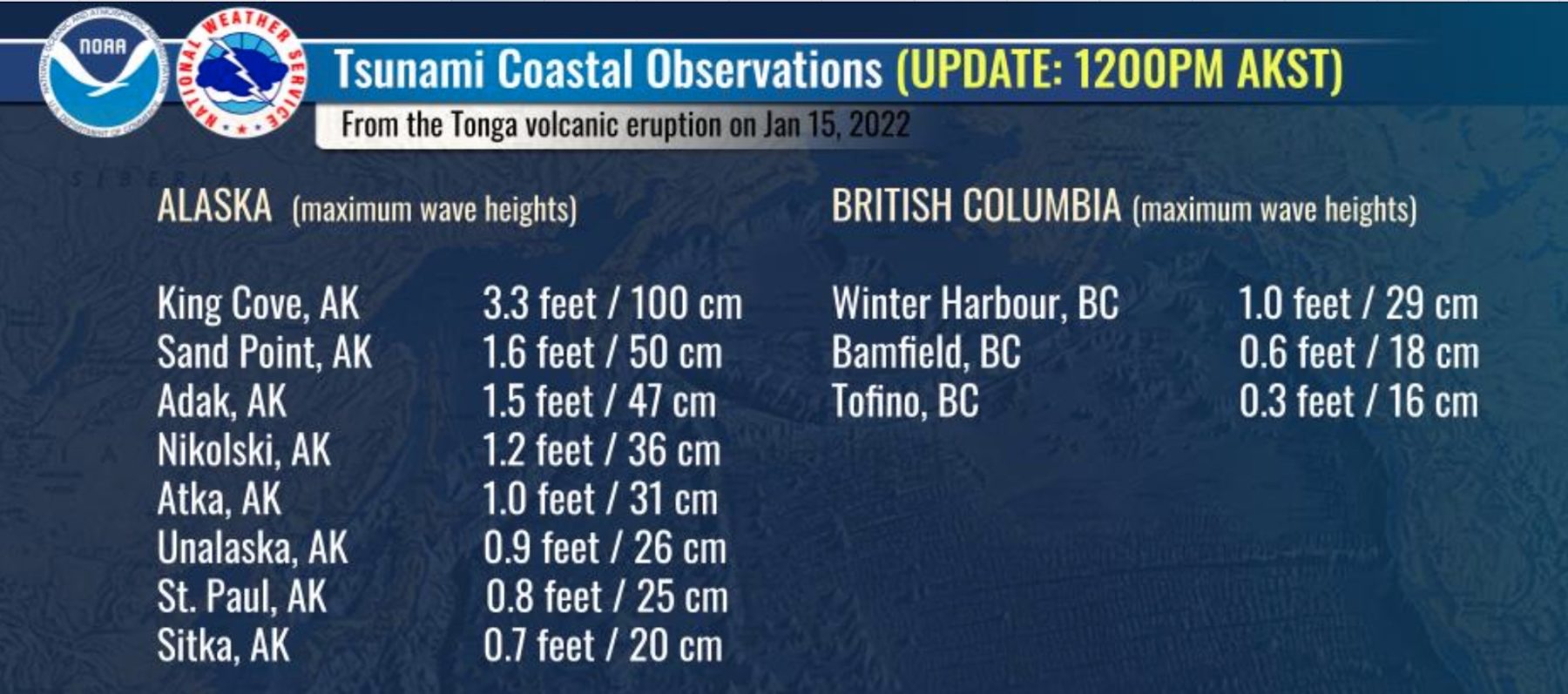
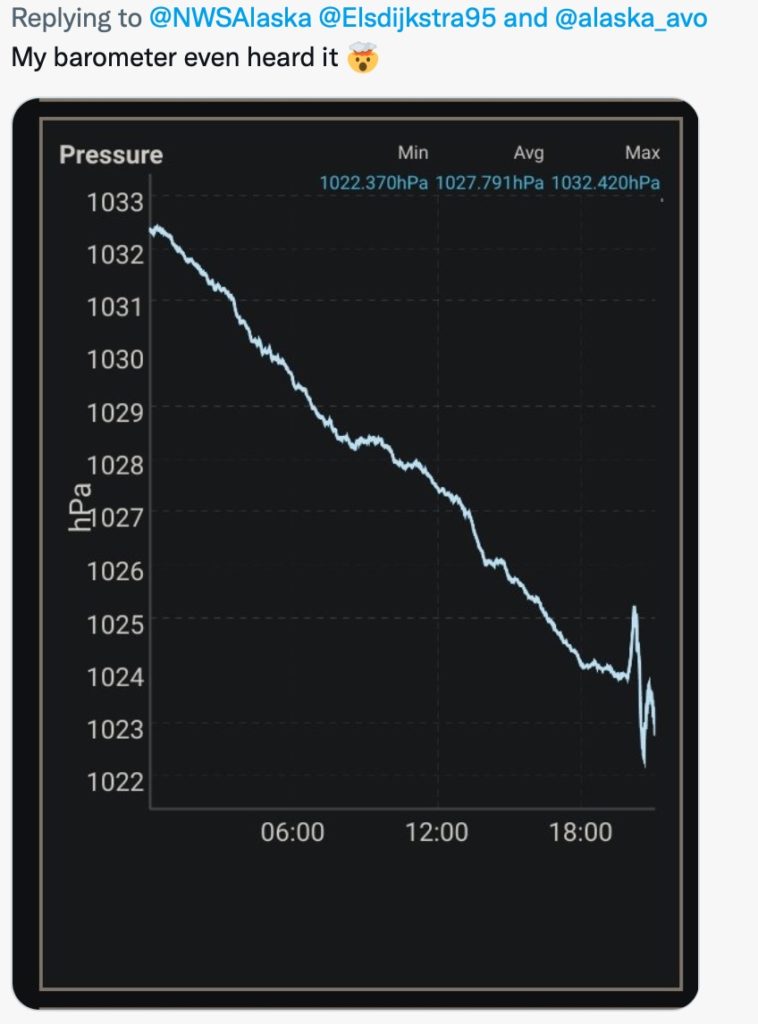
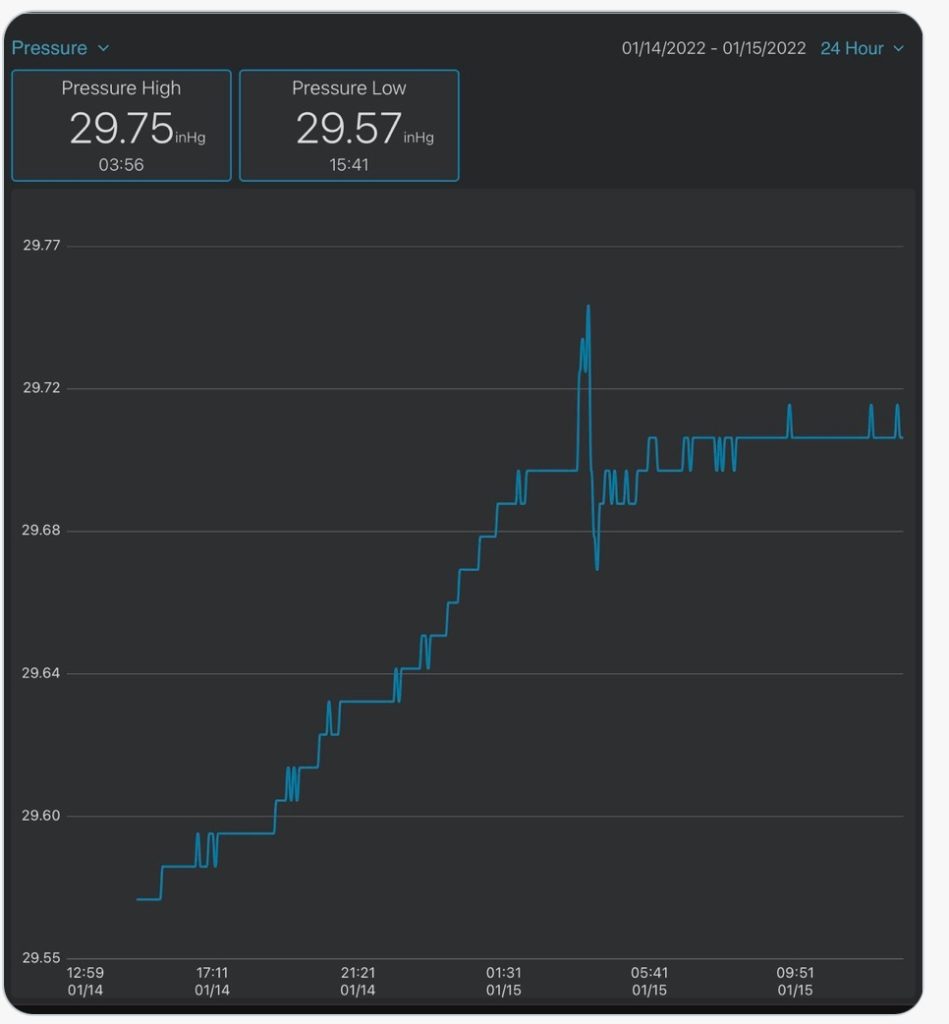
Let’s Pray for everyone’s safety in the down under Kingdom of Tonga and may God help those who lost their homes to find safety, those hungry to find food, and those thirsty to find clean water! Hopefully our government will offer assistance and hopefully have already deployed airborne assets to survey the damage, and assess the need for rescue and relief in the area!
you made me look at the barometer graph from INDOORS from the Netamo device/weather station… yup it showed up here in eagle river just before 4 am
I woke up around 4 am, (I am a light sleeper with excellent hearing) to what I thought was the sound of artillery fire far off in the distance. I must say, it caused me some dismay. My dogs woke my son up as well and we listened together. We wondered if Jber was performing a nighttime drill of sorts. We live just across the river from Palmer.
If indeed, what we heard was the sound of a volcanic explosion, that’s really cool!
Heard it here in Skagway around 0430 this morning, low volume low frequency very distinct and long duration, estimate greater than fifteen minutes. If you heard it you know.
Here is one explanation, from USGS Volcanologist. Your observations square with the sounds being generated by the first-arriving seismic P wave from an earthquake followed by perceived shaking associated with the slower, stronger S (shear) wave. As you probably know, the P-wave vibrations, which are largely vertical and higher frequency than the S wave, induce vertical vibrations that couple into audible acoustic waves at the Earth’s surface (much like a woofer in a speaker system). The slower S-wave vibrations, which are largely horizontal, are generally not as efficient in coupling into audible acoustic waves. Because they are more energetic, however, they can produce perceptible shaking.
As a rough rule of thumb, you can estimate the distance (in km) to the earthquake by multiplying time difference in seconds between the onset of the audible “thunder” and the onset of felt shaking by a factor of 8. Thus a 5 sec difference should correspond to a distance of approximately 40 km. This works reasonably well for moderate (magnitude 2.5 to 4.5) local earthquakes. (This is based on the fact that P wave speeds in the Earth are approximately 1.73 times faster that S-wave speeds) Things can get more complicated for larger or more distant earthquakes.
Fascinating stuff. Tonga is roughly six thousand miles from Skagway…
Felt/ heard it in Palmer. Woke up thinking someone was getting into the garage. I’ve heard multiple instances of explosions and artillery… this was different. More like someone opening and closing a man door in an empty garage or shop with good insulation. Kinda like a woof of gasoline on a fire.
President Biden says he’s going to put a stop to volcano violence. It’s included in Build Back Better.
My kind of humor Jim.I loved your response and am still laughing.
It was a mostly peaceful eruption, nothing to concern oneself with.
Our dog heard it and woke me up with whimpering and panting – a response he has during a thunder storm or earthquake. Hence I knew something was up and even looked on my phone at the Alaska Earthquake center to see if there had been an earthquake. Didn’t know about the volcano until later that morning but the timing matched to dog’s behavior. Interesting.
I wear hearing devices but do not sleep with them. In spite of compromised hearing I was suddenly awakened to a loud banging noise around 03:45 AM the morning of Saturday January 15th. I heard three distinct reports and first thought was “someone is banging on a door attempting to break in the house, where is my 9 mm?” Then wide awake , I listened intently and hearing no further noise drifted off to sleep. My wife heard exactly the same. We were astounded to learn later in the day the source of the noise we had heard came from nearly 6,000 miles away! Thoughts & prayers to the people of Tonga.
I am sorry that i was sleeping during this time. What a horrible time for sleep. Apparently the noise wasn’t loud enough.